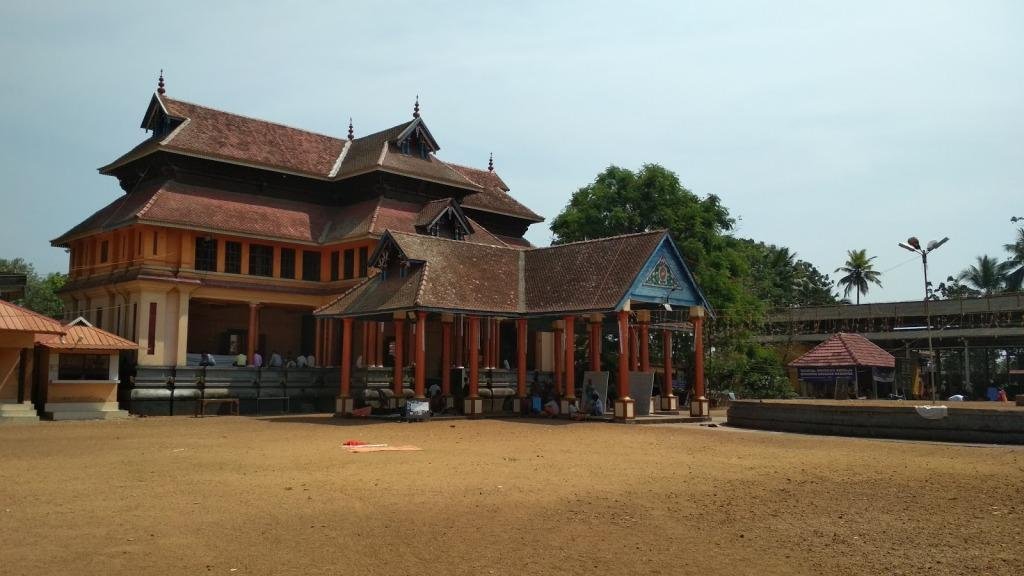Pic credit : @TheSanatanOrg/twitter
By Surya Pillai, Sub-editor, Shreyas Webmedia Solutions
Women all around the globe share a common feeling of apprehension towards the seven-day menstrual cycle that brings about discomfort and inconvenience every month. This period is also deemed a taboo in many prominent religious beliefs. Kerala, however, presents a unique stance on this very issue.
In the town of Chengannur in Kerala, there is a revered temple dedicated to Lord Shiva and Maa Parvathy, where something extraordinary happens. The idol of Maa Parvathy in the temple exhibits signs of womanhood, as the sacred cloth draped across the deity mysteriously gets stained in a blood-like color, resembling a normal lady’s dress. This fascinating phenomenon of the idol showing proof of womanhood and nature occurs approximately 3 to 4 times every year.
The phenomenon of Thrupputhu, the sacred menstrual cycle of Goddess Parvati, is a revered and extraordinary occurrence at the Chengannur Mahadeva Temple. It is a term derived from the Malayalam words ‘thiru’ meaning holy and ‘pputhu’ meaning period. The legend surrounding Thrupputhu is deeply rooted in the beliefs associated with the divine marriage of Lord Shiva and Goddess Parvati. As the tale goes, after their celestial union, the divine couple journeyed to numerous places before eventually reaching Chengannur. Here, it is said that Goddess Parvati, in her earthly form, underwent her menstrual cycle. This significant event is commemorated with immense devotion and respect, serving as a powerful symbol of the goddess’s physical presence on Earth and her intimate connection to the natural rhythms of life.
The temple’s main sanctum is truly a marvel, as it houses the divine idols of Lord Shiva and the enchanting Goddess Parvati. What makes this temple truly unique is its special way of honoring the goddess – unlike other temples, the Shivalingam is accompanied by a beautiful metallic image of Parvati, symbolizing their eternal bond. The Thrupputhu ritual, a sacred ceremony, starts when the priests observe a mystical red tinge on the cloth covering the goddess’s idol, signifying the arrival of her sacred menstrual cycle. At this sacred moment, the sanctum is respectfully closed, and the deity is tenderly relocated to a temporary destination within the temple premises, lovingly referred to as “Gosala.” Truly a sight to behold!
During this sacred period, the temple premises undergo a thorough cleansing, and intricate prayers and rituals are meticulously conducted. The divine deity is bathed and adorned in resplendent new attire, and a symbolic purifying ritual is undertaken with great reverence. A large congregation of devotees assembles to observe these sacred proceedings, recognizing Thrupputhu as a profoundly auspicious event that heralds blessings and abundance. The rituals span several days, concluding with a ceremonial reinstatement of the goddess in the main sanctum and the resumption of customary worship practices.
The Thrupputhu tradition at the Chengannur Mahadeva Temple is a captivating and enlightening ceremony that beautifully intertwines religious devotion with a deep appreciation for femininity and the harmony of natural cycles. Witnessing this sacred ritual is a truly awe-inspiring experience, showcasing the temple’s exquisite fusion of spirituality and reverence for the world around us. It’s no wonder that this enchanting tradition attracts countless pilgrims and visitors, all enchanted by the ancient legacy and profound cultural richness of the temple’s customs.
The Chengannur Mahadeva Temple stands as a majestic testament to the vibrant cultural and spiritual heritage of Kerala. The Thrupputhu tradition beautifully showcases the all-encompassing and profound beliefs that define Hinduism. From the intricate rituals to the stunning architecture, every aspect of the temple mesmerizes and captivates all who are drawn to explore the divine feminine energy celebrated within the realms of humanity.
